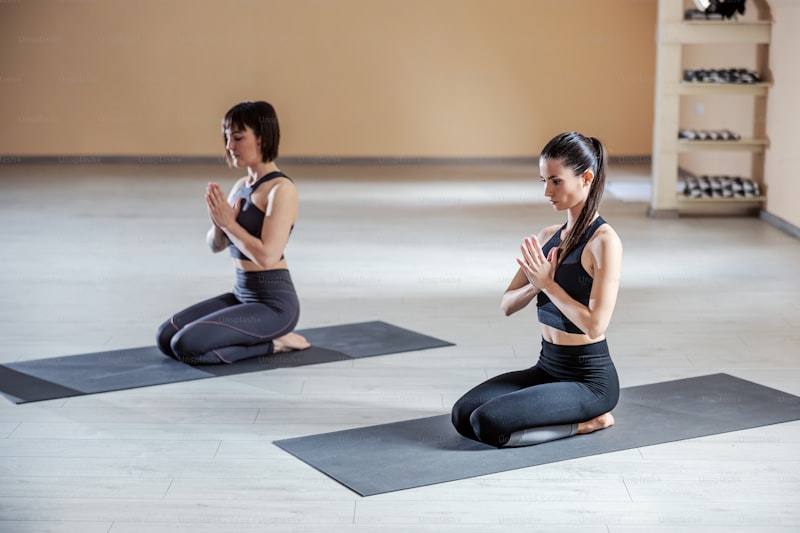As a yoga teacher and physiotherapist I spend a lot of time working with knees. They are lovely honest joints that respond beautifully to care and attention but they won’t hesitate to let you know when something is wrong. Do you know how can you get the best from them?
Let Me Introduce You
Knees are essentially hinge joints that bend and straighten, with a few degrees of rotation too when the knees are flexed. They are the joint between the thigh bone, or femur, and the larger of the two lower leg bones, the tibia. There are two ligaments that stop the bone sliding too far forwards and back (the anterior and posterior cruciate ligaments) and two collateral ligaments (medial and lateral) that stop the bones moving too far side to side.
Between the femur and tibia there are shock absorbing cushions called menisci. The main muscles that work the knees are the quadriceps and hamstrings with others like sartorious, gastrocnemius and popliteus working to make everything run smoothly.
For knees to be comfortable and work well they need strong muscles and a good range of movement. Many knee problems can be solved by simply stretching any short muscles and strengthening weak ones — this is where yoga can be SO effective in reducing pain a range of knee conditions that I see as a physio.
See Also: The Science Of Stretching
How to Strengthen Knee Muscles
Yoga is excellent at strengthening our whole legs but the knee muscles in particular. During vinyasa, in most standing poses and many seated or lying poses we use our knee muscles. Here are a few of my favourites:
- Warrior 1 & 2 — These both use the quadriceps to hold the knee in a flexed position. This trains stability which we use in daily life as well as these asanas. This can help to make a weak or painful knee better at squatting, getting up from crouching and going up and down stairs.
- Lunges — I love lunges. They do everything that Warrior 1 & 2 do and train the quads to work concentrically and eccentrically. In a high lunge, bend the front knee and lower the back knee towards the floor (eccentric work) then straighten the front knee (concentric work) to rise up. Adding a few repetitions of this to your classes will really help to strengthen the quadriceps.
- Squatting — Moving in and out of a squat with the breath (exhaling down and inhaling up) is lovely work for the quads with the added bonus of working on balance at the same time.
- Hamstrings — Controlled lowering into and out of standing forward folds really works the hamstrings. Slowing these transitions as much as possible makes for stronger hamstrings.
The Long and Short of the Matter
Many of my patients have short quadriceps and hamstrings. Sometimes it is due to inactivity; sometimes over-activity (athletes and sports people); and often simply due to poor stretching technique. No matter what the causes, yoga can really effectively target and stretch short muscles. Applying a few basic principles here can make all the difference:
- Keep stretches comfortable — An effective stretch is one that feels comfortable and stays the same or gets less as you hold the stretch. Pushing a stretch so hard that it gets uncomfortable or painful triggers clever little sensors in the muscle, called muscle spindles. These are there to protect the muscle from damage. If the muscle spindles are stimulated, the body responds by contracting the muscle to protect itself. The result? Over-stretching results in short muscles not long ones.
- Reflex inhibition — Muscles work in pairs. As one contracts, the one opposite one automatically relaxes. The quadriceps and the hamstrings are one such pair. Contracting the quadriceps results in relaxation in the hamstrings and vice versa. We can use this in yoga by cueing activation of the quadriceps in any forward folds. This is not easy but it is a real game changer in terms of deepening the poses and lengthening the hamstrings.
- Strong contraction, better relaxation — This can be used in many poses to lengthen the quadriceps. Working them hard against resistance for a few seconds, then relaxing it into a stretch is more effective at gaining length than stretching alone. This can be taught on the back leg of Dancer or Pigeon and in preparation for dhanurasana, Bow Pose, or bhekasana, or Frog Pose.
- Parsvottonasana — This is my favourite way to stretch the hamstrings. Cue activating the quads, keeping a micro bend in the front knee, chest to shin without flexing the lumbar spine to get the best out of this pose.
- Childs pose — This is great for really short quadriceps. Placing blocks under the forehead and between the bottom and heels will make this more comfortable for the students that struggle to fold themselves neatly into the pose.
A Word of Caution
Knees are very tolerant of abuse and overload but that doesn’t mean we don’t need to take care of them. Keeping a micro bend in any hamstring stretches allows the stretching force to fall on the right tissues rather than the back of the knee joint. This is particularly important for students with hyperextending knees.
Making sure there is sufficient hip external rotation in lotus and half lotus protects the knees from too much stress. Any hint of knee discomfort in in lotus and half lotus is telling you that student is not yet ready for the pose. More hip stretching is required.
During teacher training we talk a lot about knee alignment and stacking the knee over the ankle. In all students it is important to prevent the knee from drifting inwards. In beginners, allowing the knee to drift forwards of the ankle and over the toes in standing poses like warrior 1 & 2 could leave the knee vulnerable to ligament damage if the quadriceps aren’t strong enough. But in other poses (e.g. Chair and Garland) the knee will move naturally forwards over the toes rather than the ankle. This is fine and safe. As long as it is not painful it is nothing to worry about.
The Bottom Line
Knees love being stretched and strengthened, even if students have knee pain from injuries or disease it is still safe to work their knees. Make sure everything they do is comfortable and modify any poses that cause pain. Regular asana practice has the potential to prevent knee problems in healthy students and reduce knee pain in a whole range of knee pathologies. Work your knees, learn to care for them and they will love you for it! They are a great theme for a class too, and I really recommend it.













